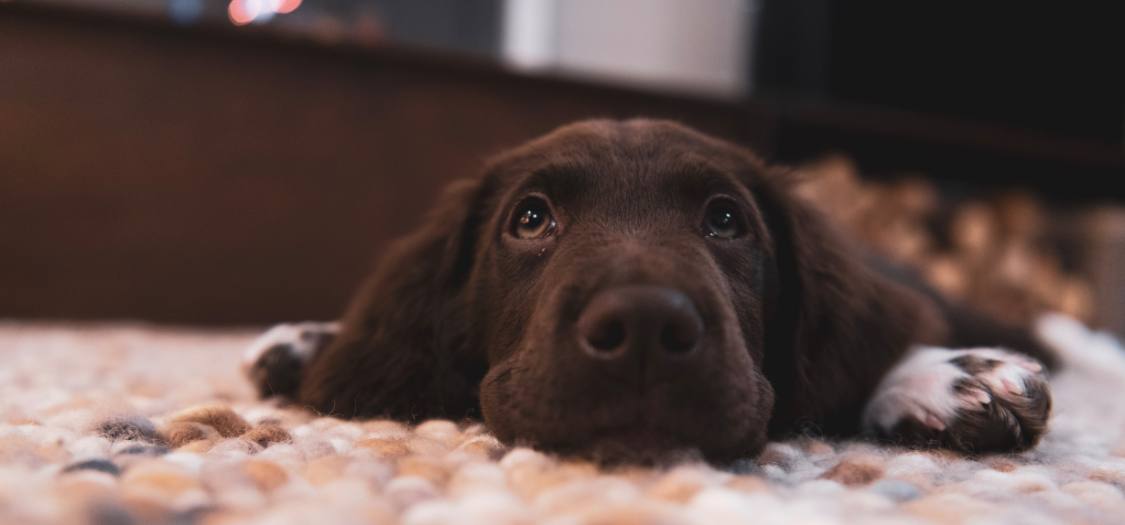Does My Dog Have Hip Dysplasia?
What Should I Do?

Hip dysplasia in dogs is a very common, painful orthopaedic condition, where the ball at the top of thigh bone (femur) doesn't sit well in socket of the hip joint. Hip dysplasia is an inherited condition. Although some breeds are more vulnerable to it than others - e.g. rapidly growing large breeds - any dog can develop it.
Damage to your dog's hip joint(s) is thought to occur during a puppy’s most rapid growth at 14-26 weeks of age, however generally symptom onset and diagnosis occurs at 6-12 months of age. Some dogs, with a mild form of the condition, won’t show signs until they are much older however and have developed arthritis of the hips.
Symptoms of hip dysplasia in dogs usually start while they are growing and can vary depending on severity of the condition.
Another sign of hip dysplasia in your dog that you might notice is that they're standing with a more narrow stance than usual. Your dog may be standing with their back legs positioned closer together. It's not their normal way of standing.
This dog hip dysplasia stance is a compensatory method to reduce pressure and discomfort on the hip joints. Each individual dog will have their own pain tolerance, so just because you don't see the dog hip dysplasia stance doesn't meant that your dog doesn't have hip dysplasia.
Although symptoms of hip dysplasia can really differ, it does not usually present as acute pain. Your dog is unlikely to yelp for example. Pain is more likely to be the dull, continuous type although sharper pain can be experienced by your dog when tested using manual manipulation by your vet for example, or if osteoarthritis has developed as a secondary condition.
Read more about Dog Hip Dysplasia Causes, Prevention and How to Help at home https://zoomadog.co.uk/collections/dog-hip-dysplasia-braces-signs-and-treatment
What Should I Do?
What Are The First Signs of Hip Dysplasia In Dogs?
What Are The Different Levels of Hip Dysplasia in My Dog?
What Should I Do?
What Should I Do?
For Hip Dysplasia For A Dog?
What Should I Do?
My Dog Has Very Bad Arthritis In His Hips. What Should I Do?
What Happens, Is It Successful, What I Should Know?
My Dog Is Too Old / Too Risky For Hip Dysplasia Surgery. What Are The Non-Surgical Options?
Can Physiotherapy and Hydrotherapy Help my Dog with Hip Dysplasia?
My Elderly Labrador has Hind Leg Hip Weakness. Does He Have Hip Dysplasia?
I Have a 13-year-old Border Collie with Hip Dysplasia in his Rear Right Hip. What Should I Do?
with Hip Dysplasia

We can help find the right solution for your dog
Feel free to give us a call on 01730 622544
or email us at woof@zoomadog.co.uk